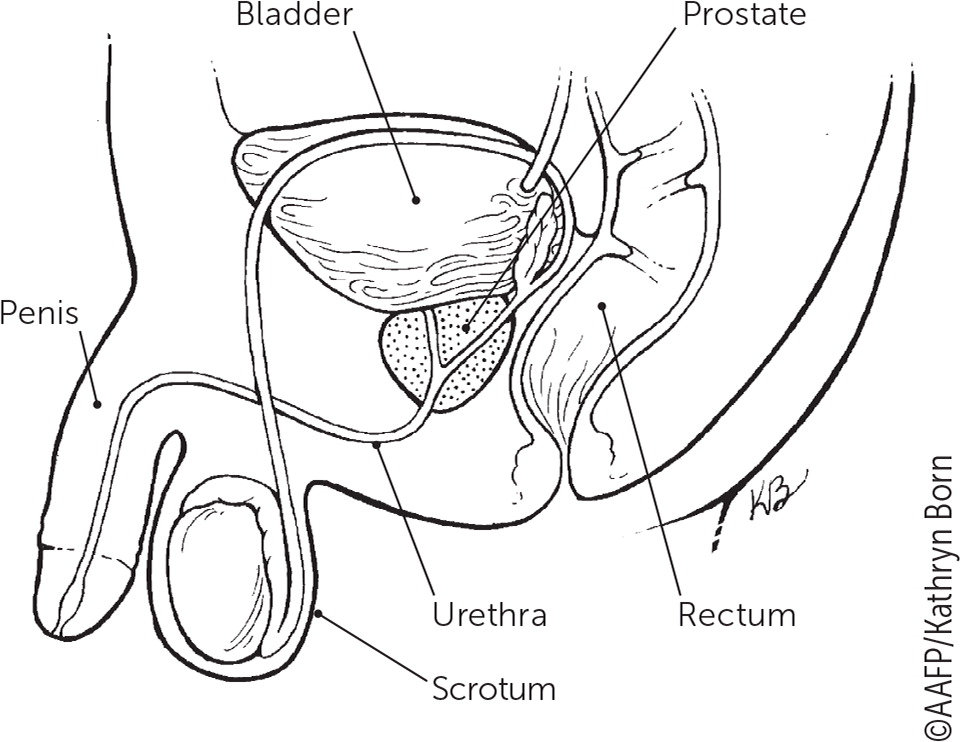
Am Fam Physician. 2023;107(6):online
Related article: Benign Prostatic Hyperplasia: Rapid Evidence Review
What is benign prostatic hyperplasia?
Benign prostatic hyperplasia, or BPH, causes your prostate gland to get bigger. The prostate gland is an organ that is usually the size of a golf ball that makes semen and surrounds the urethra.
Who gets BPH?
BPH is common, affecting about one-fourth of all men. BPH is more common in older men. It also runs in families.
What are the symptoms?
You may have problems urinating because the prostate gland surrounds your urethra, which carries the urine out of your body (see drawing).

It may be hard to start urinating, or you may not be able to urinate at all. You may have to go to the bathroom more often than normal, feel that you can't completely empty your bladder, or note dribbling. These symptoms, called lower urinary tract symptoms, are common in men with BPH.
How can my doctor tell if I have BPH?
Your doctor will ask you about your symptoms and may take a urine sample to check for signs of infection.
A rectal exam can suggest the size of the prostate. Although ultrasonograpy is the most accurate, it is recommended only before starting certain medicines or considering surgery.
How is it treated?
If the symptoms don't bother you, you may not need treatment. Behavioral techniques can be used to reduce your symptoms.
If the symptoms bother you, medicines are available that can help you feel better.
You may decide to have surgery. Your doctor can help determine what treatment is best for you.
Where can I get more information?
Your doctor
American Urological Association
https://www.urologyhealth.org/urology-a-z/b/benign-prostatic-hyperplasia-(bph)
National Library of Medicine
National Institute of Diabetes and Digestive and
Kidney Diseases

